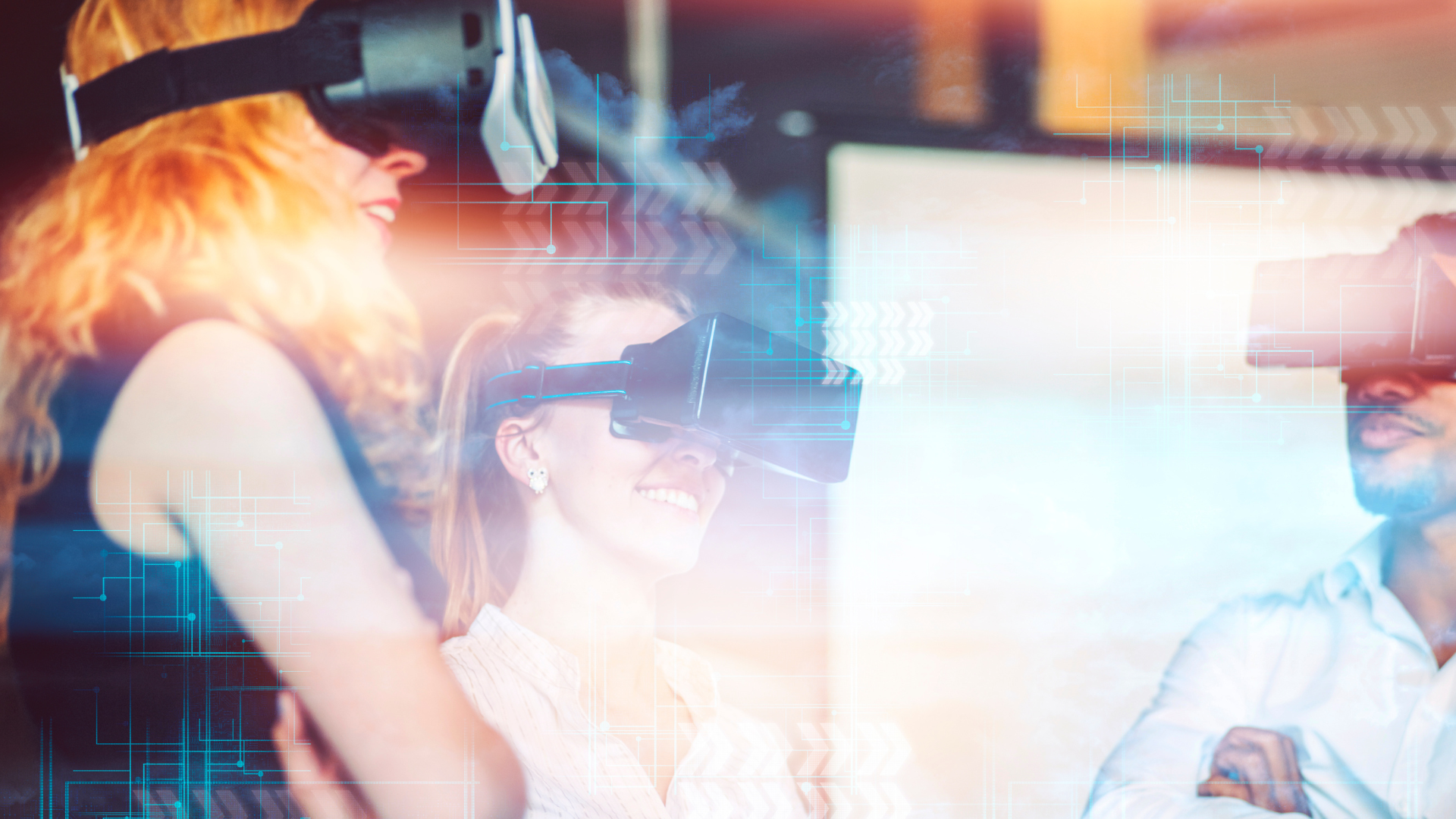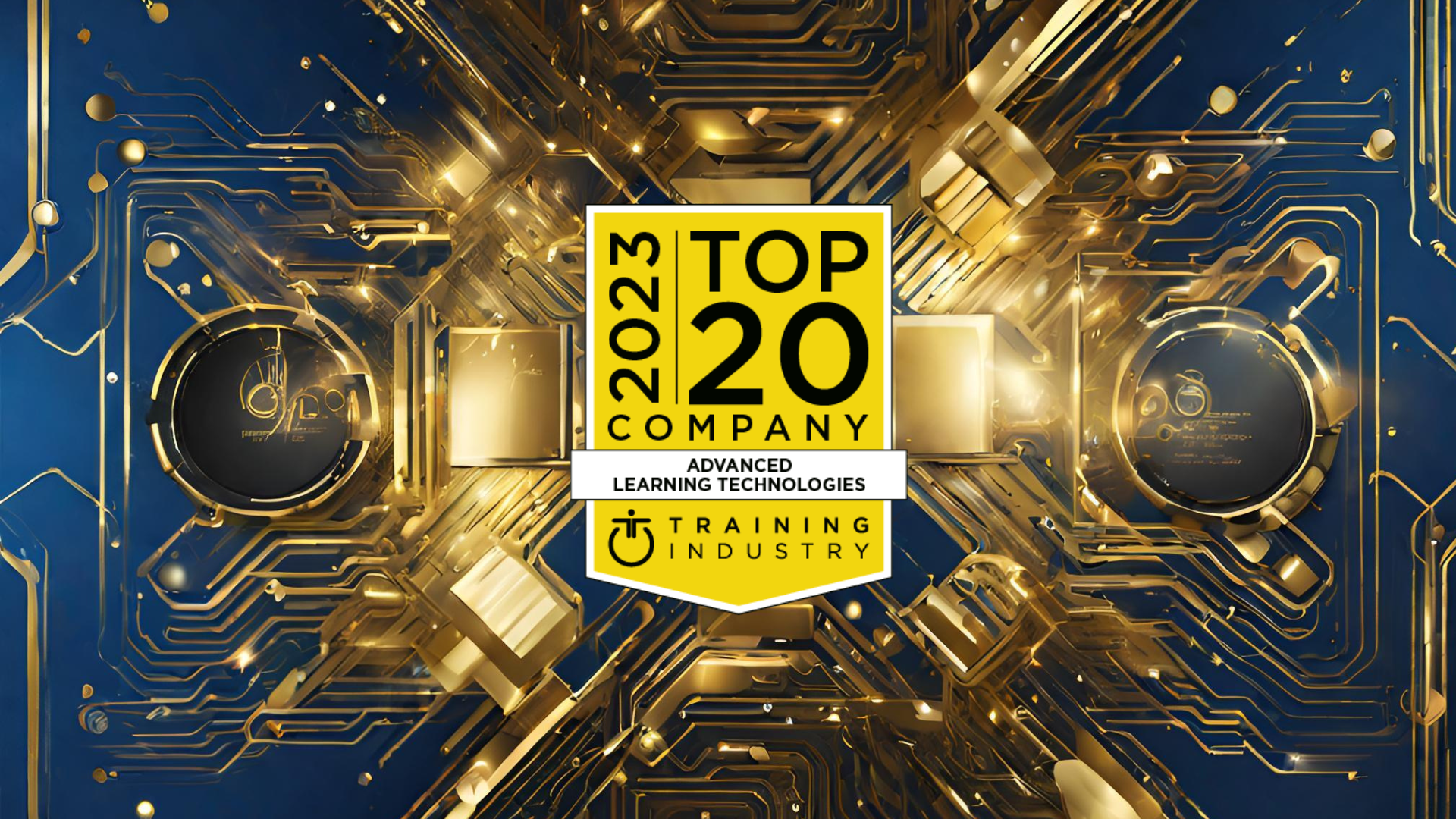The interest in creative employee training is growing rapidly, and for good reason, considering the effectiveness of VR training. According to FrontCore, VR training boasts a 75% retention rate, outperforming lectures (5%), reading (10%), and audio-visual learning (20%). While the common perception might link VR employee training exclusively to complex tasks and specialized sectors, the innovative blend of virtual reality and cutting-edge techniques paves the way for immersive and cross-disciplinary experiences that cater to both technical and soft skills.
Regardless of industry differences, we are united with a single need: we all require emotional intelligence knowledge to become good corporate citizens. Emotionally intelligent leaders cultivate a sense of belonging through higher levels of trust, cooperation, and flexibility for their teams. As a result, employees benefit as all three of these attributes strengthen cooperation and collaboration, resulting in a positive psychologically safe environment.
Most importantly, our modality for employee training and onboarding can help to empower our teams to adapt and excel–all while creating measurable results.
Using VR training with soft skill development
According to research from PwC, VR can help leaders upskill their employees faster, even when budgets and in-person training options may not be readily available. The top five benefits of VR employee training include:
- Faster time to competency: On average, employees who utilized VR training methods were trained four times faster than their e-learning and classroom learning counterparts
- Increased learner confidence: Employees who utilized virtual reality delivery reported being 275% more confident to apply their skills on the job
- Stronger emotional connection to training: Simulation-based training in virtual reality creates more meaningful learning experiences, which helps reinforce empathy and connection to the training
- Greater focus on training: In a world full of distractions, immersive learning experiences such as VR help to eliminate multi-tasking. Respondents showed astounding results - those utilizing VR employee training were up to four times more focused than those learning solely from e-learning.
- Scalable cost investments: When delivered to the appropriate audience size, VR training can create a higher return on investment for employee time and course facilitation
Embracing Innovation and Change
Adjusting to new approaches can often be daunting. Embracing the innovative possibilities of VR training involves not only the willingness of our employees to adapt but also the receptiveness of our leadership to encourage and facilitate this shift. Together, they must cultivate the appropriate mindset to facilitate growth as a cohesive unit.
A growth mindset is vital for successfully implementing any new initiative. It entails creating a nurturing, flexible learning environment that encourages open-mindedness. Learners should feel empowered to push their boundaries, exploring their capacity to adapt and demonstrate resilience in a myriad of scenarios. This kind of mindset cannot be developed in isolation; it thrives on interaction and engagement.
VR training, for instance, can be a powerful tool in cultivating this mindset. It offers a versatile and immersive platform for learning and personal development. It can simulate real-world scenarios and challenges, allowing learners to explore solutions and strategies in a safe, controlled setting. This adaptability to diverse situations will not only enhance the individual’s skills but also enrich the team’s collective resilience and problem-solving abilities.
Further, the advent of digital learning methodologies means that such growth opportunities can be offered irrespective of geographical boundaries. Digital platforms can provide context-specific training and learning experiences tailored to each worker’s unique environment, thus transcending physical limitations. This means teams can learn and grow together, regardless of their location, fostering a truly global learning and working environment.
An adaptive mindset coupled with the transformative power of VR training and digital learning strategies can help create a robust, resilient, and innovative workforce.
Investing in culture training
One significant obstacle that hinders the implementation of comprehensive educational strategies within an organization is the substantial time investment required. This apprehension is often rooted in the perceived decrease in productivity that typically accompanies training sessions. So, how can we diminish the amount of time employees spend away from their primary tasks, such as attending to patients or working on the production floor, while simultaneously maximizing the effectiveness of their education? The solution lies in bringing the learning environment directly to the learners.
Virtual reality, by its very design, ensures consistent delivery of educational material while simultaneously facilitating a tailored learning experience for each individual. It enables the accurate evaluation of knowledge acquisition, making every immersive training session a valuable tool for learning. It empowers learners to not only develop a deeper sense of empathy but also to navigate intricate scenarios. By immersing learners in realistic, yet controlled situations, they can quite literally ‘walk a mile in another person’s shoes.’ This experience enriches their understanding and provides firsthand insight into a variety of perspectives and circumstances.
By integrating innovative technological training methods like virtual reality into the organization’s learning and development strategy, businesses can balance the need for continued productivity with the imperative of providing effective and impactful employee education.
Use cases for VR employee training
In the past, VR employee training was largely viewed as a luxury exclusive to elite Fortune 500 corporations and technological powerhouses. However, as with many things, time has brought about a significant shift in this perspective. With the advent of more cost-effective equipment, an increased pool of skilled professionals, and a wider range of software alternatives, VR training has become accessible to a greater number of organizations.
Now, more than ever, businesses across various sectors are leveraging this dynamic instructional approach. This democratization of VR training is reshaping the landscape of corporate learning and development, proving that innovative and immersive training is no longer the sole domain of industry giants, but a practical and effective tool for organizations of all sizes.
Examples of using VR to boost emotional intelligence and foster cultural norms:
Enhancing Empathy and Communication through VR: VR training can significantly improve interpersonal connection and communication. For instance, in the healthcare sector, certain VR programs replicate the experiences of elderly patients. Such immersive experiences allow medical practitioners to better comprehend their patients’ discomfort and frustrations, which, in turn, fosters increased empathy and understanding.
Cultivating Cultural Competence with VR: The Department of Defense (DoD) offers an excellent example of how VR can enhance cultural competence. The department utilizes VR training to prepare military personnel and their support teams for assignments in culturally complex environments. The VR program allows them to learn about unique cultures and navigate simulated challenging experiences, thereby fostering a deeper understanding and adaptability to different cultural norms.
Combating Unconscious Bias through VR: Procter & Gamble, a corporate powerhouse, employs VR as an instrument to mitigate unconscious bias within its ranks. The company reinforces an inclusive and empathetic work culture by providing immersive learning experiences that simulate instances of discrimination. Such experiences allow employees to ‘walk in the shoes’ of those who experience bias, helping them understand the implications and repercussions of unconscious bias.
Utilizing VR for Recruitment and Cultural Transmission: Moreover, Procter & Gamble leverages VR to advocate for their organizational culture. It offers prospective employees virtual ‘walk-throughs’ of a day in the life of various roles within the company. This innovative approach not only attracts potential employees but also helps them understand and appreciate the company culture before they join, smoothing the transition and ensuring a better fit.
Looking Ahead
We are just at the dawn of a transformative era. Groundbreaking strategies aimed at aiding learners to develop and enhance their empathy, compassion, and understanding are gaining substantial traction. Cultivating an emotional intelligence skill set can enrich interpersonal dynamics within the workplace, nurturing a more empathetic and compassionate environment.
This positive shift in the organizational culture doesn’t just enhance the day-to-day work experience; it also has far-reaching implications. It can significantly impact recruitment strategies by making the organization more attractive to prospective employees who value a supportive and understanding work environment. Improved retention rates can be observed as employees tend to stay longer in workplaces where they feel understood and valued.
Additionally, an empathetic and compassionate work culture can bolster resilience. When challenges arise, teams with strong interpersonal connections and mutual understanding are more likely to support each other and collectively overcome obstacles.
This positive work culture can also contribute to increased revenue. When employees feel valued and understood, they are more likely to be engaged and motivated, leading to improved productivity and, ultimately, enhanced business performance.
In essence, the innovative approaches in learning and development, particularly in honing emotional intelligence, are not just changing how we learn; they’re reshaping the entire landscape of the workplace for the better.






